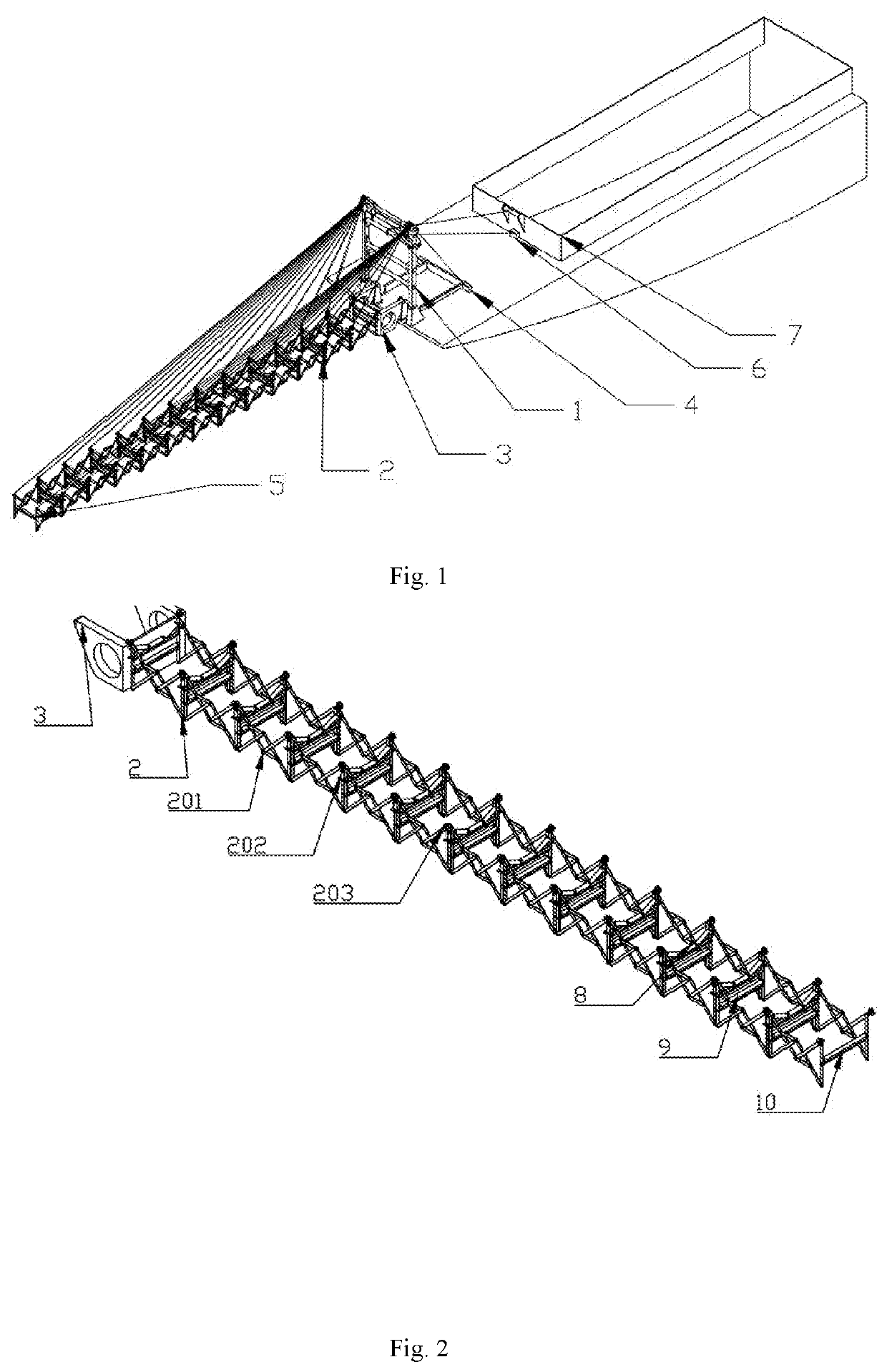Method for operating multi-bar linkage mechanism based conveyor
a technology of linkage mechanism and conveyor, which is applied in the field of conveyors, can solve the problems of low stability, high safety hazards, and inability to operate such vessels, and achieve the effects of avoiding the loss of stability of the whole system, simple operation of automatic control system, and concise overall structure of conveyor
- Summary
- Abstract
- Description
- Claims
- Application Information
AI Technical Summary
Benefits of technology
Problems solved by technology
Method used
Image
Examples
Embodiment Construction
[0057]The present invention will be further described below with reference to the accompanying drawings by specific embodiments.
[0058]An embodiment of the present invention will be described below. A method for operating a multi-bar linkage mechanism based conveyor is provided. The conveyor comprises a gantry system 1, a gantry, a set of gantry pulleys, gantry pulleys, a gantry support, a multi-bar linkage mechanism based conveyor boom 2, a boom support 3, a first two-drum winch 4, a roller unit 5, a second two-drum winch 6 and an automatic control system. The multi-bar linkage mechanism based conveyor boom 2 comprises multi-bar linkage mechanisms 201, hydraulic cylinders 202 and pulleys 203, wherein the pulleys 203 are in a composite structure of carbon fibers and carbon steel. The multi-bar linkage mechanism based conveyor boom 2 is articulated with the boom support 3. The multi-bar linkage mechanism based conveyor boom 2 comprises a plurality of multi-bar linkage mechanisms 201 e...
PUM
 Login to View More
Login to View More Abstract
Description
Claims
Application Information
 Login to View More
Login to View More - R&D
- Intellectual Property
- Life Sciences
- Materials
- Tech Scout
- Unparalleled Data Quality
- Higher Quality Content
- 60% Fewer Hallucinations
Browse by: Latest US Patents, China's latest patents, Technical Efficacy Thesaurus, Application Domain, Technology Topic, Popular Technical Reports.
© 2025 PatSnap. All rights reserved.Legal|Privacy policy|Modern Slavery Act Transparency Statement|Sitemap|About US| Contact US: help@patsnap.com


